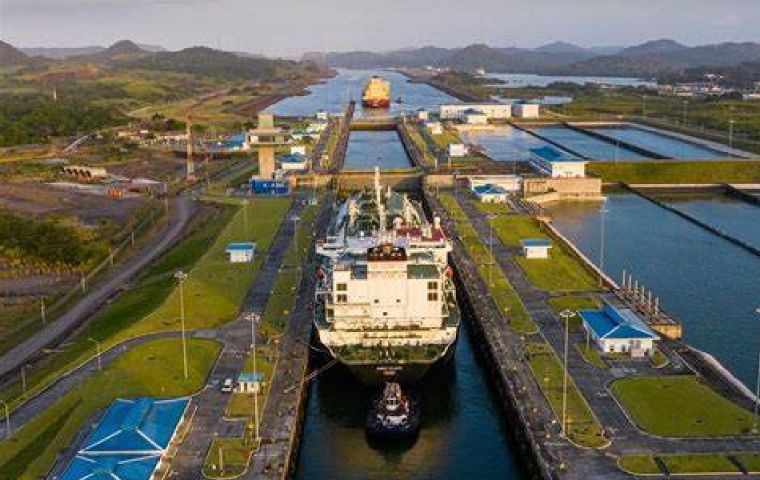MercoPress. South Atlantic News Agency
Panama Canal posts significant setback in FY2024
 The number of crossing vessels was cut down from 38 to 22 on average between July 2023 and May 2024
The number of crossing vessels was cut down from 38 to 22 on average between July 2023 and May 2024 The Panama Canal Authority (ACP) reported this week a 29.3% drop in passing ships during Fiscal Year 2024 as a result of the severe drought affecting the interoceanic crossing. A total of 9,944 transits were recorded this year, a significant setback from 14,080 crossings in 2023. A fiscal year runs from October 1 to September 30 of the following year.
”During FY-2024, the Panama Canal recorded 9,944 transits and 423 million PC/UMS (Universal Canal Ship Tonnage System) tons. Of the total transits, 7,084 were panamax vessels and the rest, 2,852, were neopanamax vessels,” the ACP said in a statement. It was the second consecutive reduction after a -1.1% posted last year.
Since late 2023, the canal has been facing a serious water supply problem due to a drought believed to stem from the El Niño phenomenon and global warming which affected the water levels at the nearby Alajuela and Gatun artificial lakes feeding the locks. Unlike the Suez Canal, the Panama Canal runs on fresh water.
The ensuing constraints also resulted in less cargo being transported. The lack of rainfall reduced the daily passage of ships from 38 to 22 on average between July 2023 and May 2024. The situation has gone back to normal in recent months with the new rainy season. Most of the vessels crossing the canal last year were container carriers (2,773), chemical tankers (1,808), gas carriers (1,561), and bulk carriers (1,278), it was also explained.
On the brighter side, the Panamian Route projects record US$ 5.623 billion in revenues in 2025, when some 13,900 ships with 520 million tons of cargo are expected to pass through.
The 80-kilometer Panama Canal was inaugurated by the United States on August 15, 1914, and currently serves as a passage for around 5% of the world's maritime trade.




Top Comments
Disclaimer & comment rulesCommenting for this story is now closed.
If you have a Facebook account, become a fan and comment on our Facebook Page!